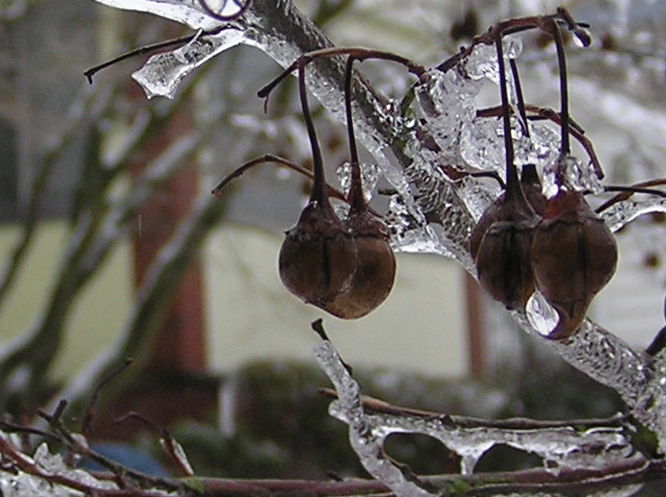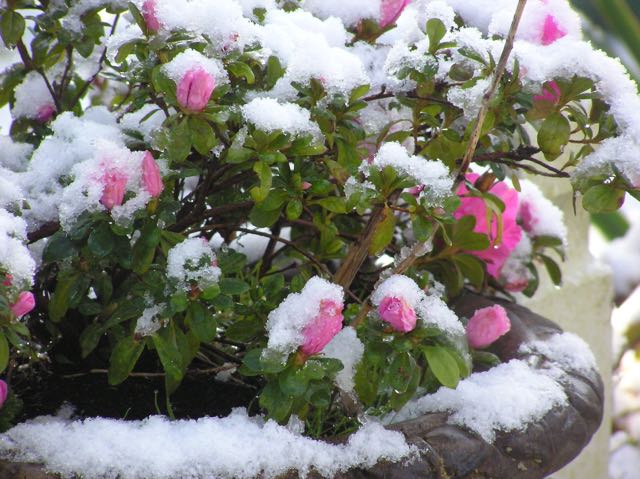
icicles on seeds
The northeast coast of the U.S. is battened down in preparation for an epic storm. Its not just the humans that need to be prepared either. Even the trees have work to do in preparation for the winter blasts.
Here in Seattle the days are exceptionally warm for January – yesterday it was over 60F. It is probable that we will have cherry blossoms and daffodils early this year. And I am keeping my fingers crossed that we do not get a late freeze. If we do it could kill our fruit trees because this warm weather has lulled them into believing that spring is already here and they have become vulnerable to any more winter blasts.

Have you ever wondered about how trees survive wintery blasts or why an early warm spell followed by freezing temperatures can kill trees that survive far colder temperatures in a usual winter.
The answers are astounding with powerful implications for our faith.
…trees are large, tall, and immovable. They have no choice but to face everything winter can throw at them. And yet, as you travel north throughout the world one thing is ubiquitous: forests… (read the entire article)


